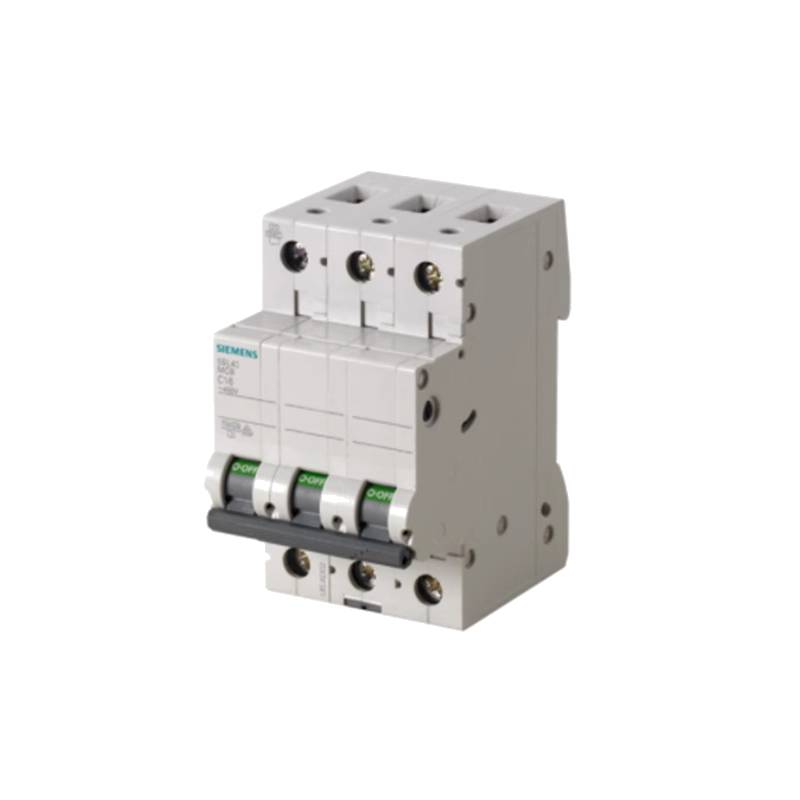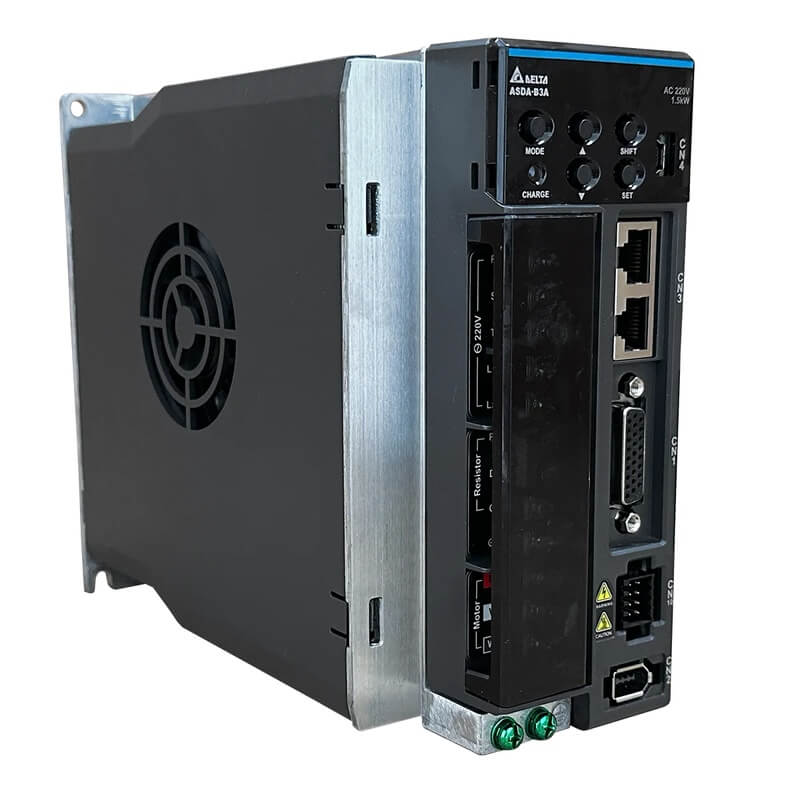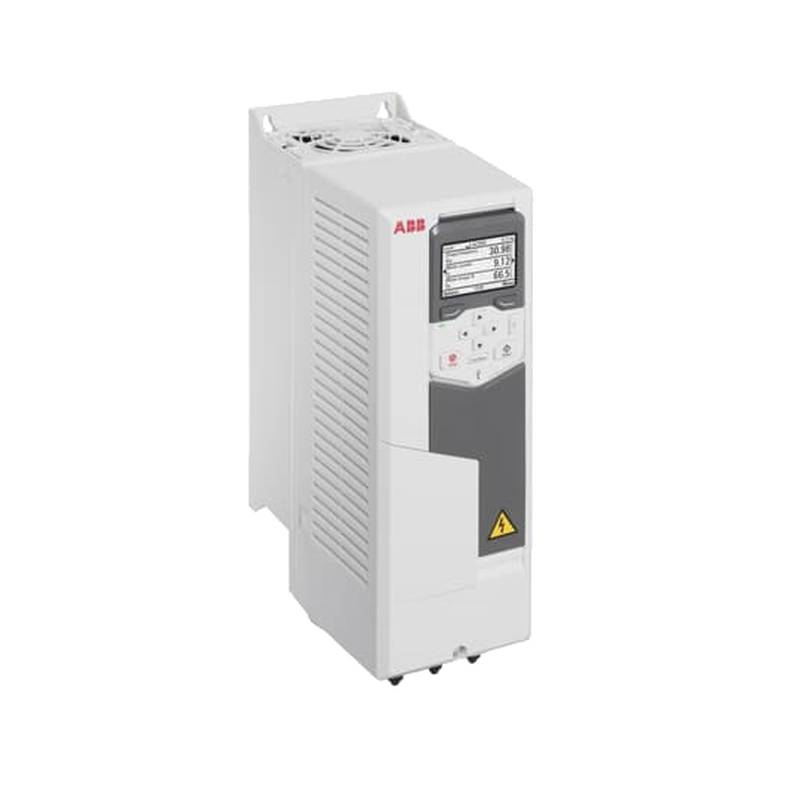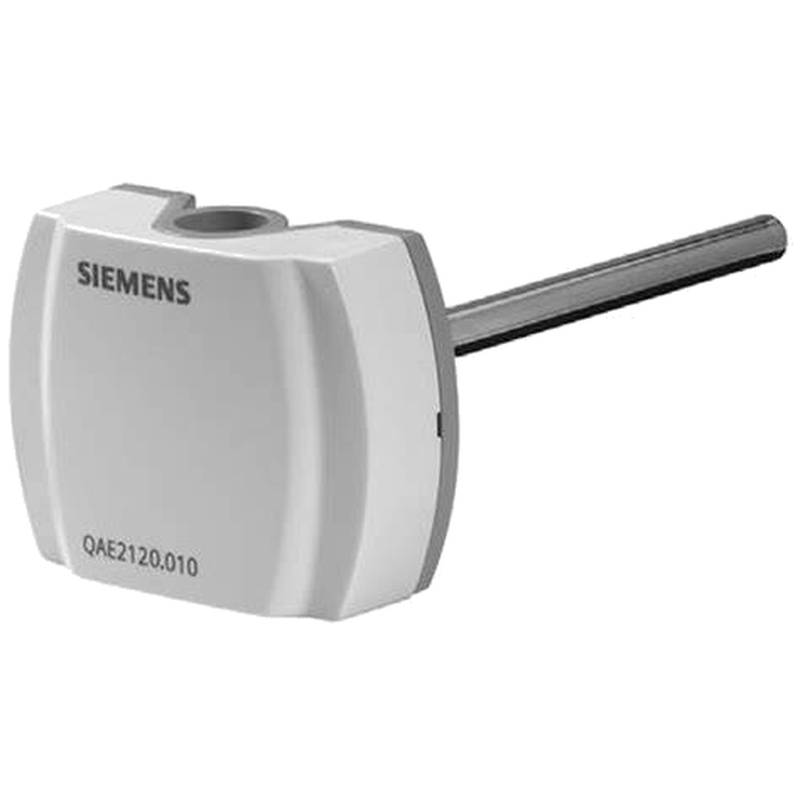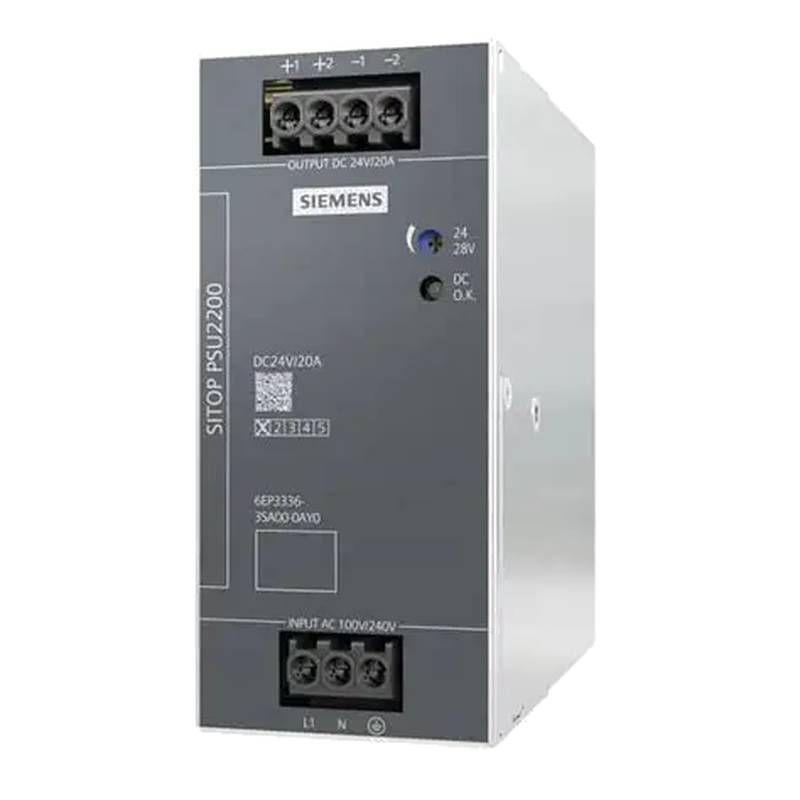
The Siemens 5SN6325-8CN High Breaking Capacity Protection MCB (3-Pole, 25A) stands as a robust solution for critical circuit protection in demanding industrial environments. Engineered for superior safety and reliability, this Miniature Circuit Breaker (MCB) boasts an impressive 10kA breaking capacity, ensuring effective containment of short-circuit events and safeguarding downstream equipment. Its Type C tripping characteristic makes it ideal for applications with moderate inrush currents, such as motor starting or fluorescent lighting circuits, offering a balance between sensitive overload protection and immunity to transient surges. Designed for standard DIN rail mounting, the 5SN6325-8CN simplifies installation and integration into existing electrical panels, further enhancing its utility in diverse industrial settings.
Product Specifications
| Feature | Specification |
| :--------------------- | :------------------------------ |
| Product Type | Miniature Circuit Breaker (MCB) |
| Manufacturer | Siemens |
| Model Number | 5SN6325-8CN |
| Poles | 3 |
| Rated Current (In) | 25A |
| Breaking Capacity (Icn)| 10kA |
| Tripping Characteristic| Type C |
| Rated Voltage (Ue) | 400V AC |
| Frequency | 50/60 Hz |
| Mounting Type | DIN Rail |
| Protection Function | Overcurrent, Short Circuit |
| Compliance Standards | IEC/EN 60898-1, IEC/EN 60947-2 |
Core Features & Market Positioning
The Siemens 5SN6325-8CN distinguishes itself through its high breaking capacity, a critical factor in environments where fault currents can be substantial. This 10kA rating signifies its ability to safely interrupt severe short circuits, a key differentiator from lower-rated MCBs and a crucial element for compliance with stringent safety regulations. The Type C tripping curve is a significant advantage, providing excellent protection against overloads while minimizing nuisance tripping caused by the temporary, higher current draws typical of inductive loads like motors and transformers. This characteristic positions the 5SN6325-8CN as a reliable choice for industrial power distribution where operational continuity is paramount alongside safety. Furthermore, its robust construction, typical of Siemens industrial components, ensures long-term durability and performance even under challenging operational conditions, reinforcing its market standing as a premium protective device.
Key Application Scenarios
This high-performance MCB is exceptionally suited for protecting main distribution circuits and individual feeders in industrial facilities, power distribution boards, and control cabinets. Its 10kA breaking capacity is vital for areas with a higher risk of short circuits, such as near large machinery or in transformer-fed systems. The Type C characteristic makes it an ideal selection for circuits supplying inductive loads, including motor control centers (MCCs), pump systems, and HVAC equipment, where the initial startup current can be several times the rated operational current. Additionally, it finds application in protecting lighting circuits with ballasts or electronic drivers, preventing unwanted interruptions during lamp warm-up. Its 3-pole configuration is essential for three-phase power systems, ensuring complete isolation and protection across all live conductors for balanced loads and phase-sensitive equipment.
Practical System Integration Guidance
Integrating the Siemens 5SN6325-8CN into existing electrical infrastructure is straightforward due to its standard DIN rail mounting capabilities. Ensure the mounting rail is securely fastened and properly grounded. When wiring, connect the incoming power supply to the upper terminals and the outgoing load to the lower terminals, adhering to proper torque specifications for the screw terminals to prevent loose connections, which can lead to overheating. For three-phase applications, ensure consistent wiring order across all three poles for correct phase identification and protection. Before energizing, perform insulation resistance tests and continuity checks to verify correct installation and prevent potential faults. Always follow local electrical codes and standards during installation.
Operation and Risk Mitigation
The Siemens 5SN6325-8CN operates automatically, tripping off the circuit when an overcurrent or short-circuit condition is detected, thus preventing damage to connected equipment and mitigating fire hazards. Its manual reset function allows for easy restoration of power after a fault has been identified and rectified. Key operational risks include attempting to reset the breaker without addressing the underlying fault, which could lead to repeated tripping or component damage. Users should be aware that the tripping characteristics are designed for specific load types; using a Type C breaker on a purely resistive load with very low inrush might lead to slightly less sensitive overload protection compared to a Type B. Always ensure the ambient temperature is within the operational limits specified by Siemens to maintain performance.
Scalability & Long-Term Value
The Siemens 5SN6325-8CN offers significant long-term value through its compatibility with the broader Siemens industrial automation ecosystem. While not a "smart" device in terms of direct digital communication, its robust mechanical design and adherence to international standards ensure it remains a reliable component within evolving electrical systems. For enhanced monitoring and control, it can be integrated into panels alongside Siemens communication-enabled devices like intelligent electronic devices (IEDs) or smart meters, allowing for remote status indication and data logging. This approach facilitates a gradual transition towards more digitized plant operations without necessitating immediate replacement of all protective devices. Its durability ensures a long service life, reducing the need for frequent replacements and contributing to lower total cost of ownership.
FAQs
Q1: What is the breaking capacity of the Siemens 5SN6325-8CN?
This MCB features a high breaking capacity of 10kA. It effectively interrupts fault currents up to this level. This ensures safety in severe short-circuit events.
This rating is crucial for protecting electrical systems in industrial settings. It meets stringent safety standards and regulations. Proper application prevents equipment damage and fire hazards.
The 10kA capacity signifies its robustness for demanding environments. It offers superior protection compared to lower-rated devices. This makes it a reliable choice for critical infrastructure.
Q2: What does the 'Type C' tripping characteristic mean for this MCB?
Type C indicates it trips between 5 to 10 times the rated current. This is suitable for loads with moderate inrush currents. Examples include motors and transformers.
It balances overload protection with immunity to temporary surges. This prevents nuisance tripping during equipment startup. It ensures operational continuity for inductive loads.
Unlike Type B, it is less prone to tripping on brief, high current draws. Yet, it still provides fast protection against short circuits. This makes it versatile for various industrial applications.
Q3: Can the Siemens 5SN6325-8CN be used for single-phase applications?
This model is a 3-pole MCB, designed for three-phase systems. It provides protection across all three live conductors. This is essential for balanced loads.
While technically it could protect one phase of a three-phase system, it's not its intended use. Using a 3-pole for single-phase is inefficient and not standard practice. It's best suited for 3-phase loads.
For single-phase applications, a 1-pole or 2-pole MCB is recommended. This ensures proper device sizing and application. Always select the MCB configuration matching the power system.
Q4: What are the dimensions and mounting requirements for the 5SN6325-8CN?
This MCB is designed for standard DIN rail mounting. It fits typical electrical enclosures. This ensures easy installation and replacement.
It occupies a specific number of module widths on the rail. This needs to be accounted for in panel design. Always check the exact width specification for your layout.
Ensure the DIN rail is securely installed and properly grounded. This is vital for both mechanical stability and electrical safety. Follow manufacturer guidelines for secure mounting.
Q5: How does the 10kA breaking capacity benefit an industrial installation?
A 10kA breaking capacity safely interrupts high fault currents. This prevents severe damage to electrical equipment. It significantly reduces the risk of fire.
This rating is essential in areas with potential for large short circuits. Such as near transformers or large motor loads. It ensures compliance with safety standards.
It provides a higher level of protection for critical circuits. This enhances overall system reliability and reduces downtime. It offers peace of mind for facility managers.
Q6: What types of loads is a Type C MCB most suitable for?
Type C MCBs are ideal for circuits with moderate inductive loads. This includes electric motors, transformers, and solenoids. They experience higher inrush currents on startup.
They offer a good compromise between overload sensitivity and surge immunity. This prevents unnecessary tripping during normal operation. It ensures reliable power delivery.
They are commonly used for general industrial power circuits. Protecting equipment that draws more current initially. But still requires fast short-circuit protection.
Q7: Is this MCB compatible with Siemens' S200 or S7 series?
While the 5SN6325-8CN is a Siemens product, compatibility varies. It's designed for standard distribution systems. Integration with S7 PLCs would be indirect.
Direct digital communication isn't a feature of this MCB. It functions as a standalone protective device. Interfacing with S7 systems would require auxiliary signaling devices.
It is mechanically compatible with standard distribution boards. Often used within the broader Siemens electrical product range. Always verify specific system integration requirements.
Q8: What is the operating temperature range for the Siemens 5SN6325-8CN?
This MCB typically operates within a standard industrial temperature range. Common specifications are around -25°C to +55°C. Always refer to the datasheet for precise limits.
Deviating from the specified range can affect performance. Extreme cold may stiffen internal components. High heat can reduce current-carrying capacity.
Ensuring proper ventilation in enclosures is crucial. This helps maintain the MCB within its optimal operating conditions. It guarantees reliable protection over time.
Q9: Can this MCB be used for DC circuits?
The Siemens 5SN6325-8CN is primarily designed for AC circuits. Its breaking capacity and tripping characteristics are optimized for AC systems. It is rated for 400V AC.
Using it on DC circuits is generally not recommended without specific ratings. DC fault currents behave differently than AC currents. Special DC-rated breakers are required for DC applications.
Attempting to use an AC MCB on a DC circuit can lead to unsafe conditions. The arc extinguishing capabilities may be insufficient. Always use breakers designed for the specific voltage type.
Q10: How do I reset the Siemens 5SN6325-8CN after a trip?
After a trip, first identify and rectify the fault. Then, manually move the toggle switch to the 'ON' position. Ensure the switch moves freely.
If the MCB trips again immediately, the fault persists. Do not force the switch or attempt repeated resets. This could indicate a serious issue.
Consult a qualified electrician if the fault cannot be resolved. Continued tripping suggests a problem requiring professional diagnosis. Safety is paramount in such situations.














